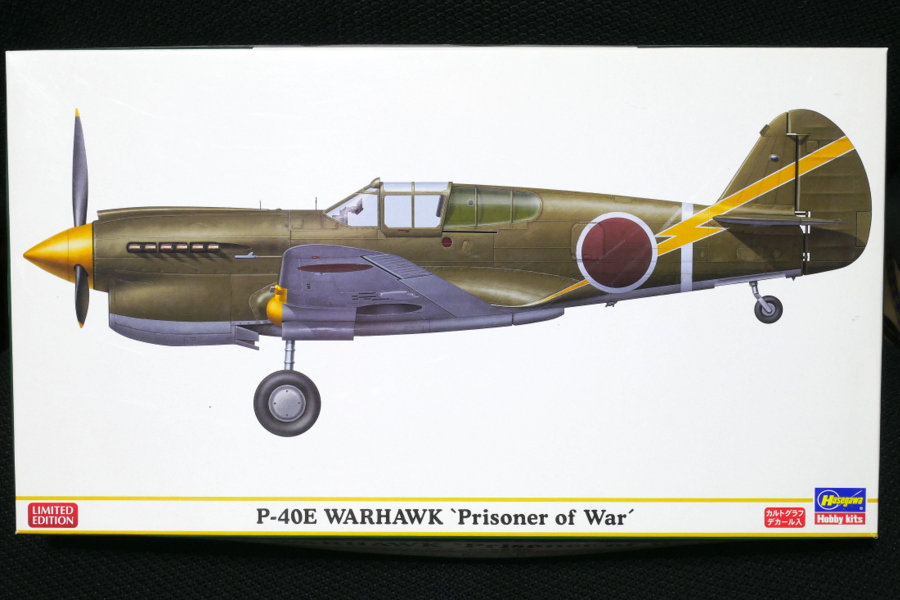 This time I will make P-40E. I bought this kit about three years ago. At that time, I was looking for an ordinary Hasegawa P-40E. It happened to be out of stock, so there was no standard kit, and there is only this Imperial Japanese Army version, so I bought to keep one for the time being. I have never made a standard type P-40; I have left it for a long time because I cannot feel like building a captured fighter version.
This time I will make P-40E. I bought this kit about three years ago. At that time, I was looking for an ordinary Hasegawa P-40E. It happened to be out of stock, so there was no standard kit, and there is only this Imperial Japanese Army version, so I bought to keep one for the time being. I have never made a standard type P-40; I have left it for a long time because I cannot feel like building a captured fighter version.
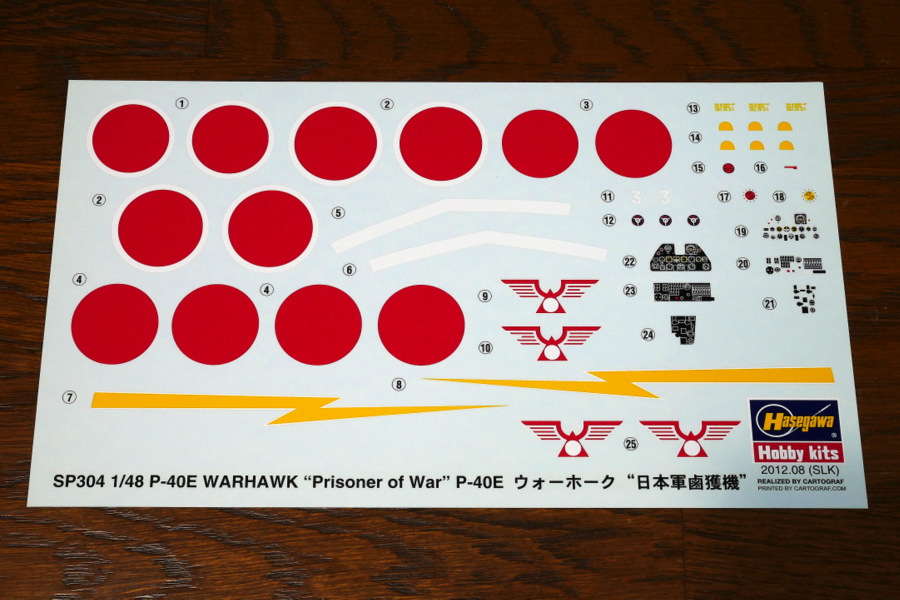 Cartograf decals are brilliant and colorful. I will use only the instrument panel decal.
Cartograf decals are brilliant and colorful. I will use only the instrument panel decal.
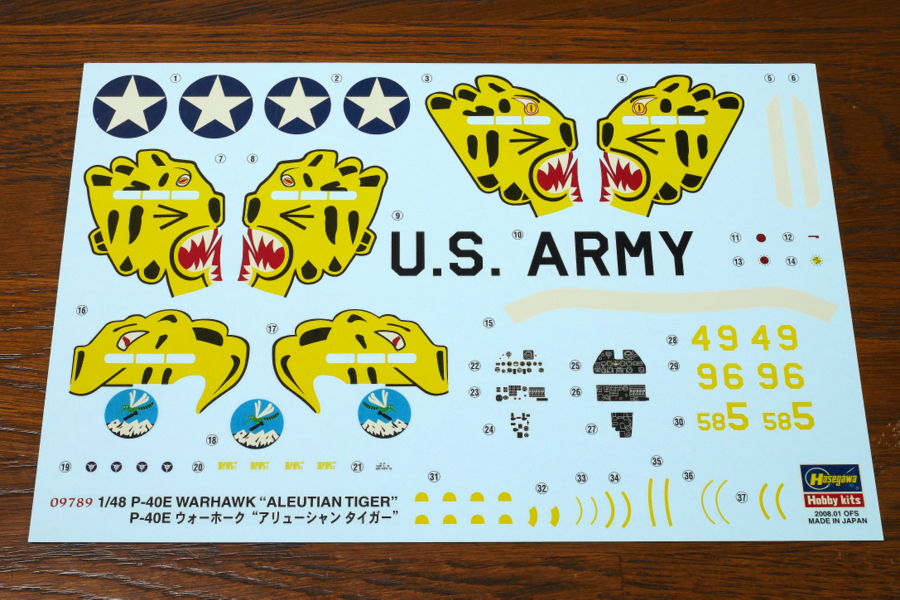 Another decal sheet is attached. It is unknown whether this is from the origin or has faded away. Not only white but also yellow seems to be slightly dull. It looks like there are a few small cracks. It is a low-quality product that deteriorates a few years after purchase with a brand-new one. Recently, Hasegawa’s kit is said to have improved the quality of the decal. I hope so.
Another decal sheet is attached. It is unknown whether this is from the origin or has faded away. Not only white but also yellow seems to be slightly dull. It looks like there are a few small cracks. It is a low-quality product that deteriorates a few years after purchase with a brand-new one. Recently, Hasegawa’s kit is said to have improved the quality of the decal. I hope so.
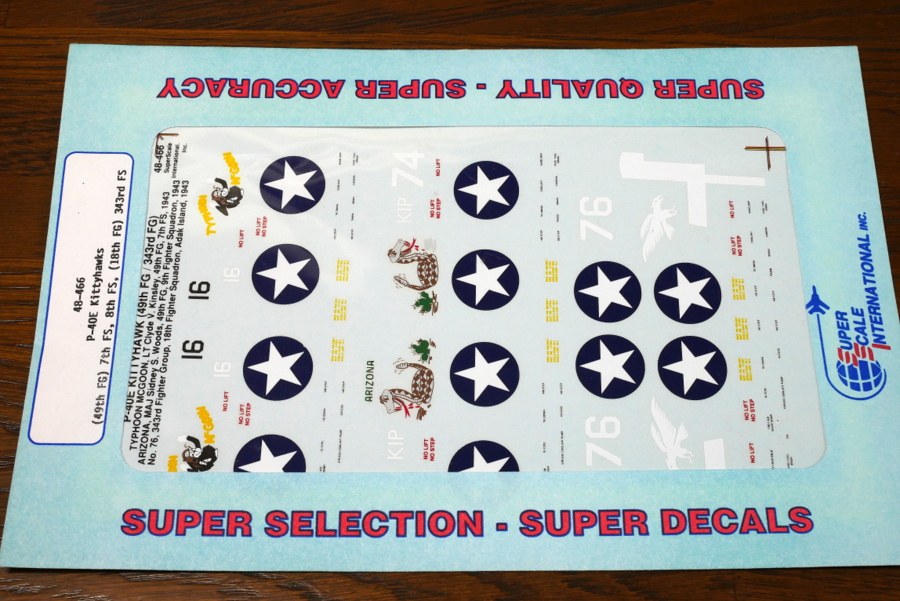 Even if the decal for the U.S. Army fighter is yellow, I do not panic this time. I have a seat of a Super Scale Decal, so I will try using this one, maybe.
Even if the decal for the U.S. Army fighter is yellow, I do not panic this time. I have a seat of a Super Scale Decal, so I will try using this one, maybe.
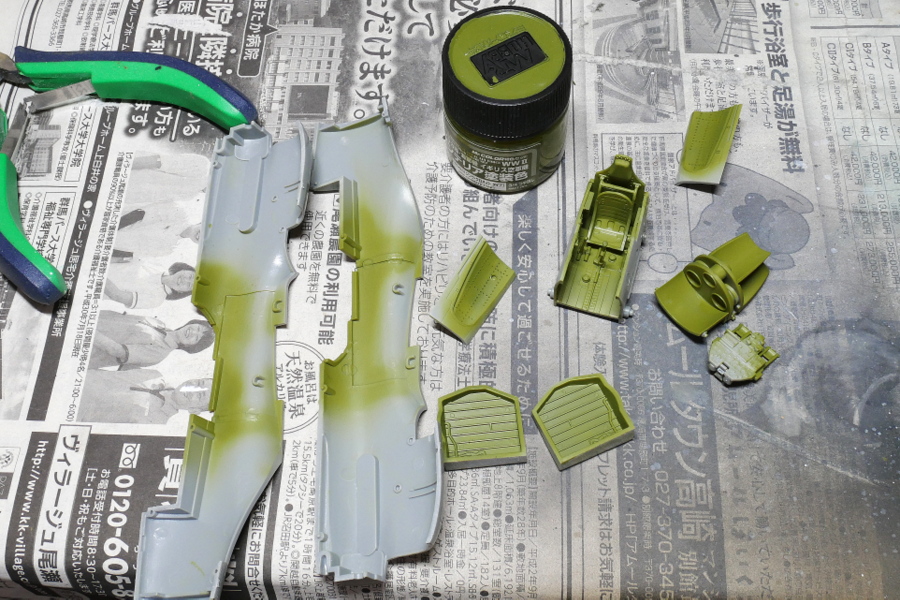 The cockpit color is blown on various parts. I want to advance all in one stroke, but I need to use the same color for the nose and the canopy frame.
The cockpit color is blown on various parts. I want to advance all in one stroke, but I need to use the same color for the nose and the canopy frame.
(1-February-2019)
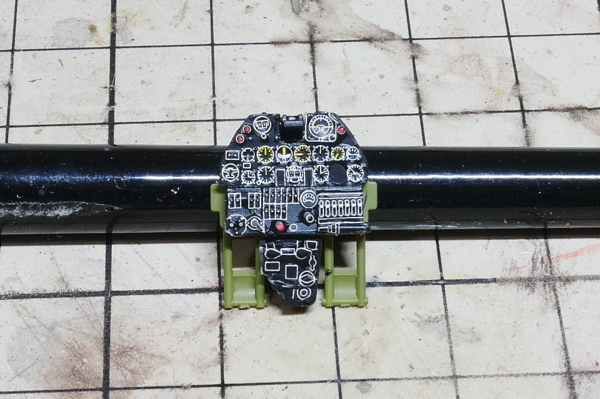 Put a decal and matte coating. It is a good feeling.
Put a decal and matte coating. It is a good feeling.
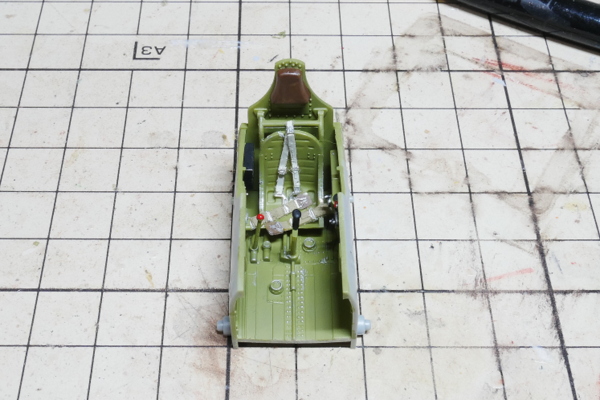 Detail up the additional cockpit work, only a seat belt.
Detail up the additional cockpit work, only a seat belt.
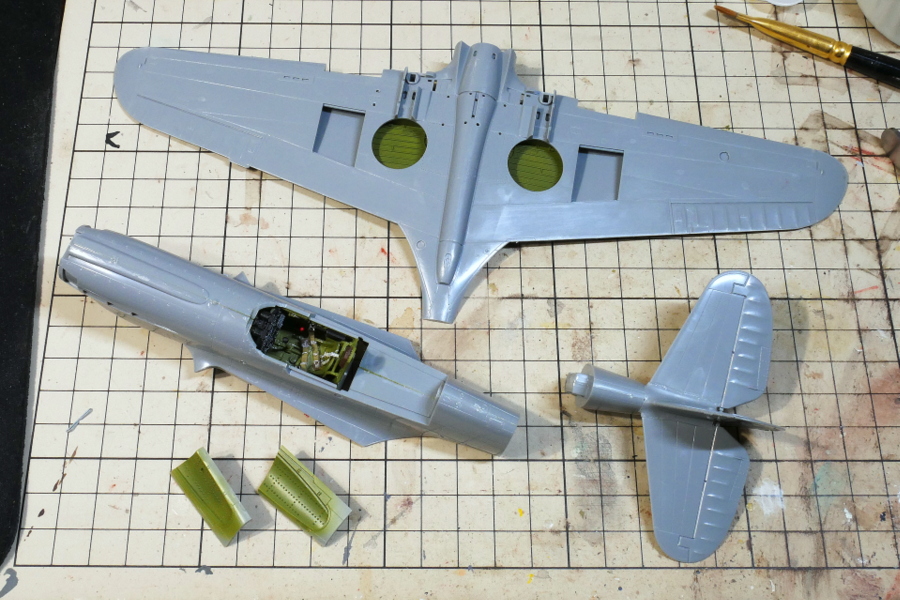 This kit was roughly divided into three because the aircraft’s tail section was divided.
This kit was roughly divided into three because the aircraft’s tail section was divided.
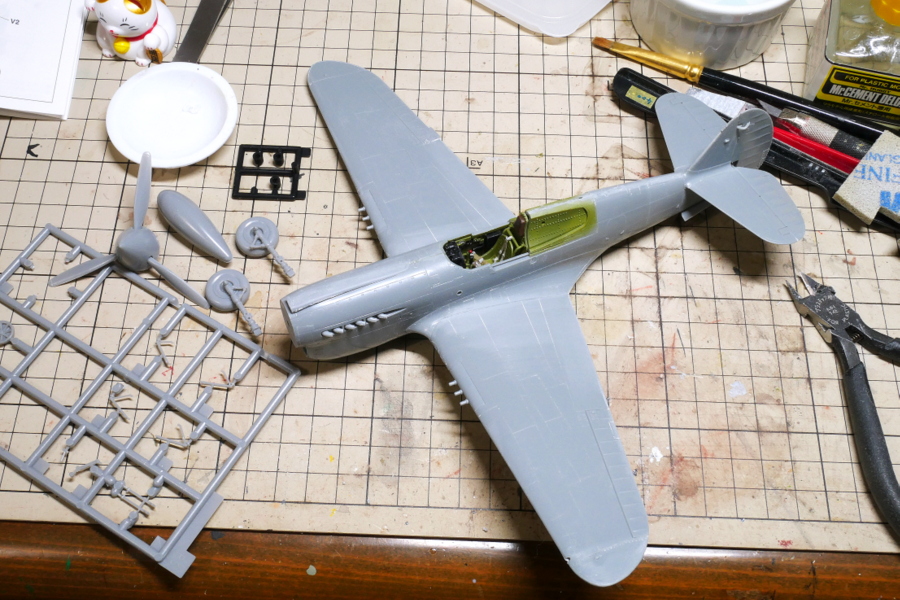 Well, finally, it became a rough shape of the aircraft.
Well, finally, it became a rough shape of the aircraft.
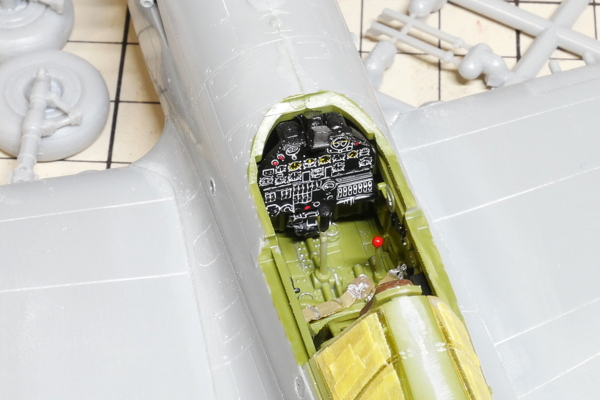 The P-40 meters are in a position of clearly visible, so a detailed decal is appreciated.
The P-40 meters are in a position of clearly visible, so a detailed decal is appreciated.
(03-February-2019)
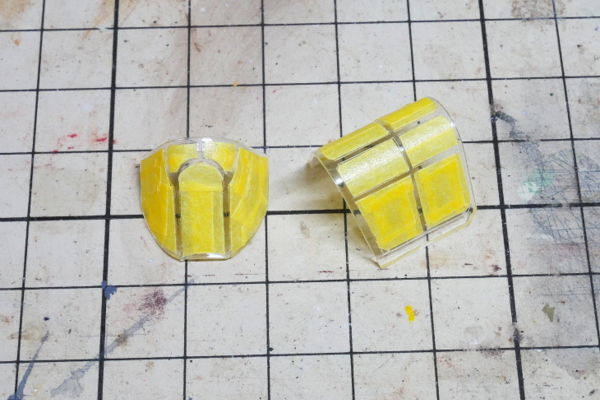 Masking the canopy is pretty detailed work. I have several types of Tamiya masking tape. I think that it is not suitable for the canopy. There is a risk of curling up while painting with weak adhesive strength. Because the usual masking tape is necessary to cut, using the third-party aircraft masking seal is also an option.
Masking the canopy is pretty detailed work. I have several types of Tamiya masking tape. I think that it is not suitable for the canopy. There is a risk of curling up while painting with weak adhesive strength. Because the usual masking tape is necessary to cut, using the third-party aircraft masking seal is also an option.
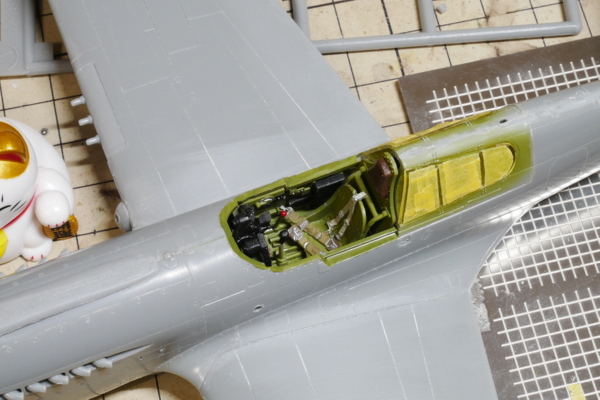
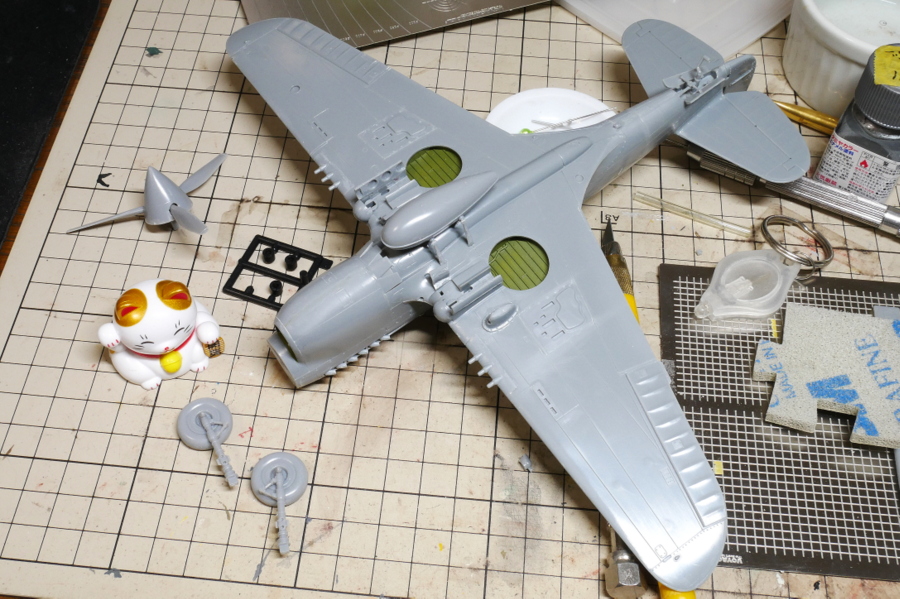 There will be places where you will have to paint the brush later; anyway, I have bonded the parts like this.
There will be places where you will have to paint the brush later; anyway, I have bonded the parts like this.
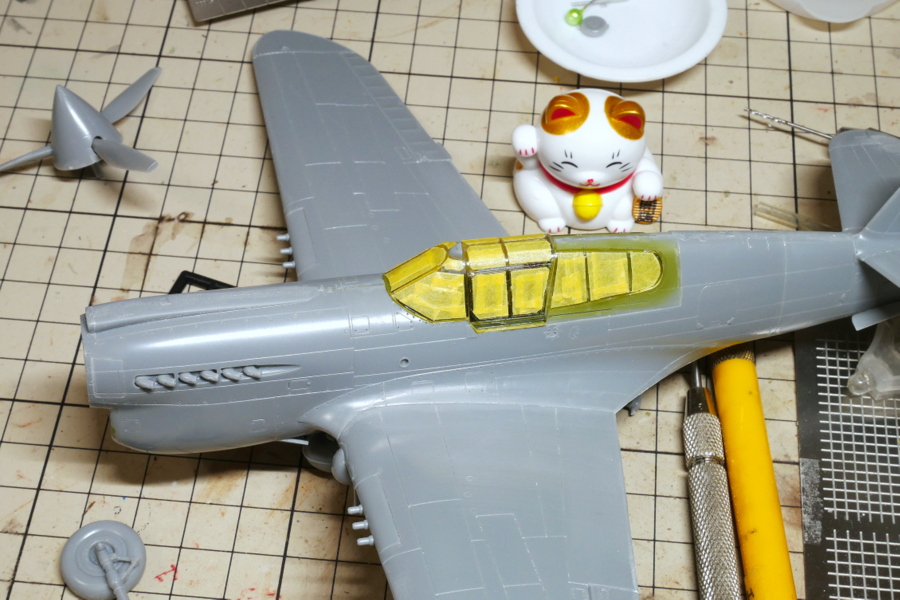
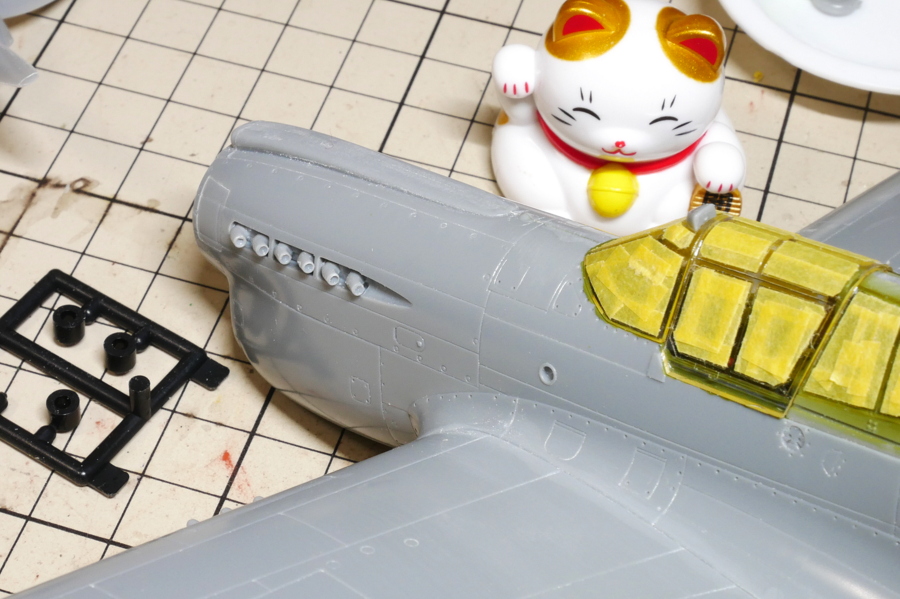 Many exhaust pipes are on both sides of the nose. All lightly drilled a hole. A little realism increased. The lucky cat is made of plastic that was attached to the Kagami-mochi. Kagami-mochi is circular, flat rice cakes offered to the god during the New Year in Japan. Kagami-mochi is offerings to the god in the New Year because rice cakes have been considered a sacred food in Japan since ancient times. I kept the cat figure at hand because it was lovely.
Many exhaust pipes are on both sides of the nose. All lightly drilled a hole. A little realism increased. The lucky cat is made of plastic that was attached to the Kagami-mochi. Kagami-mochi is circular, flat rice cakes offered to the god during the New Year in Japan. Kagami-mochi is offerings to the god in the New Year because rice cakes have been considered a sacred food in Japan since ancient times. I kept the cat figure at hand because it was lovely.
(05-February-2019)
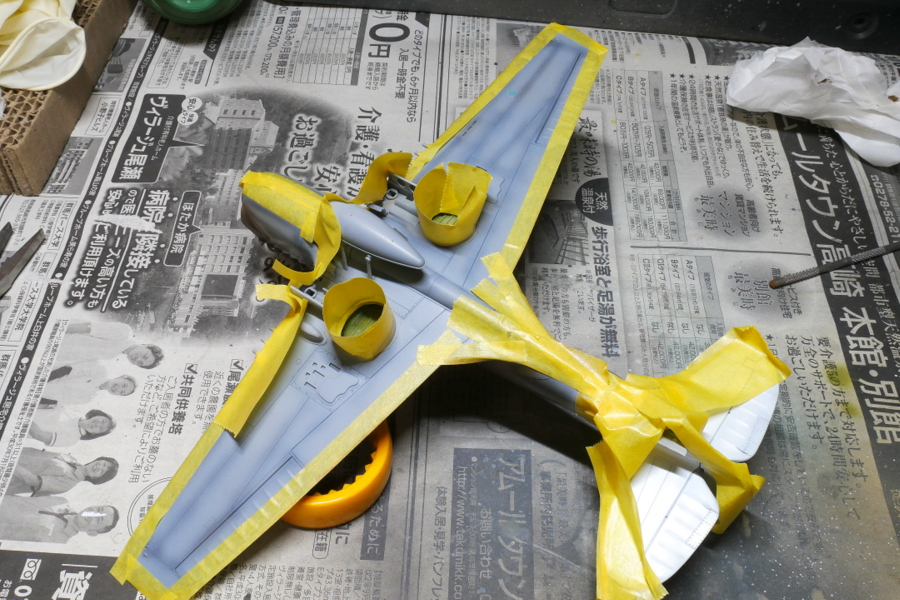 I used Mr. Color No. 306, gray FS 36270, on the underside of the aircraft.
I used Mr. Color No. 306, gray FS 36270, on the underside of the aircraft.
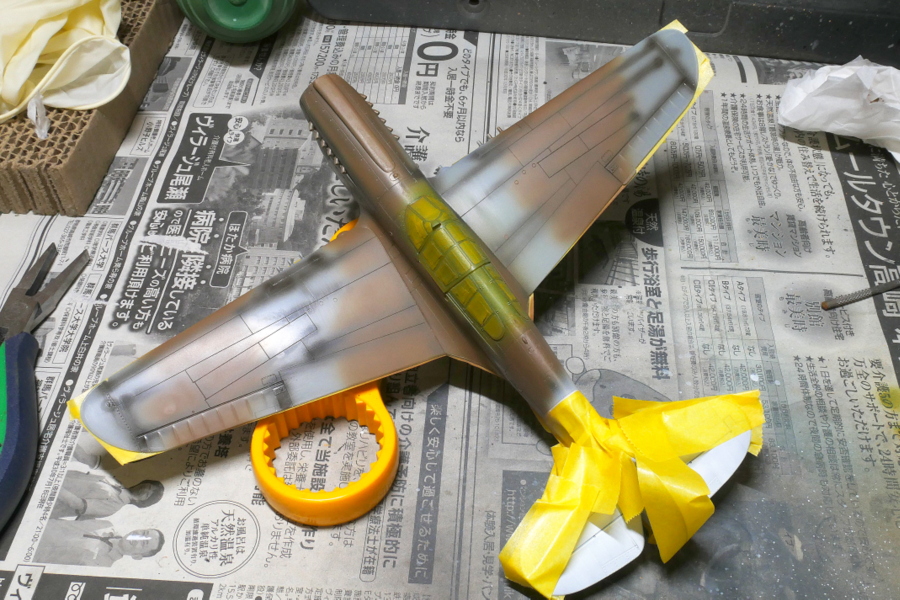 The top of the fuselage is No. 22 Dark Earth and 340 Field Green FS 34097.
The top of the fuselage is No. 22 Dark Earth and 340 Field Green FS 34097.
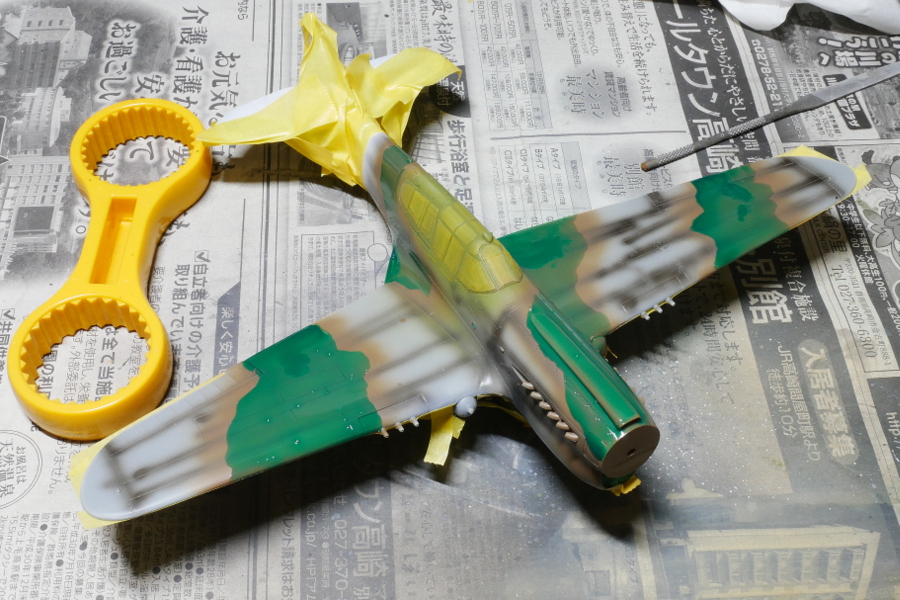 Since the boundary of the camouflage colors is clear, I painted it with a masking sol. I think that the rough pattern is best for this aircraft. I wanted to make the curves smoother, but the sol was clinging and hard to paint.
Since the boundary of the camouflage colors is clear, I painted it with a masking sol. I think that the rough pattern is best for this aircraft. I wanted to make the curves smoother, but the sol was clinging and hard to paint.
(2019/02/08)

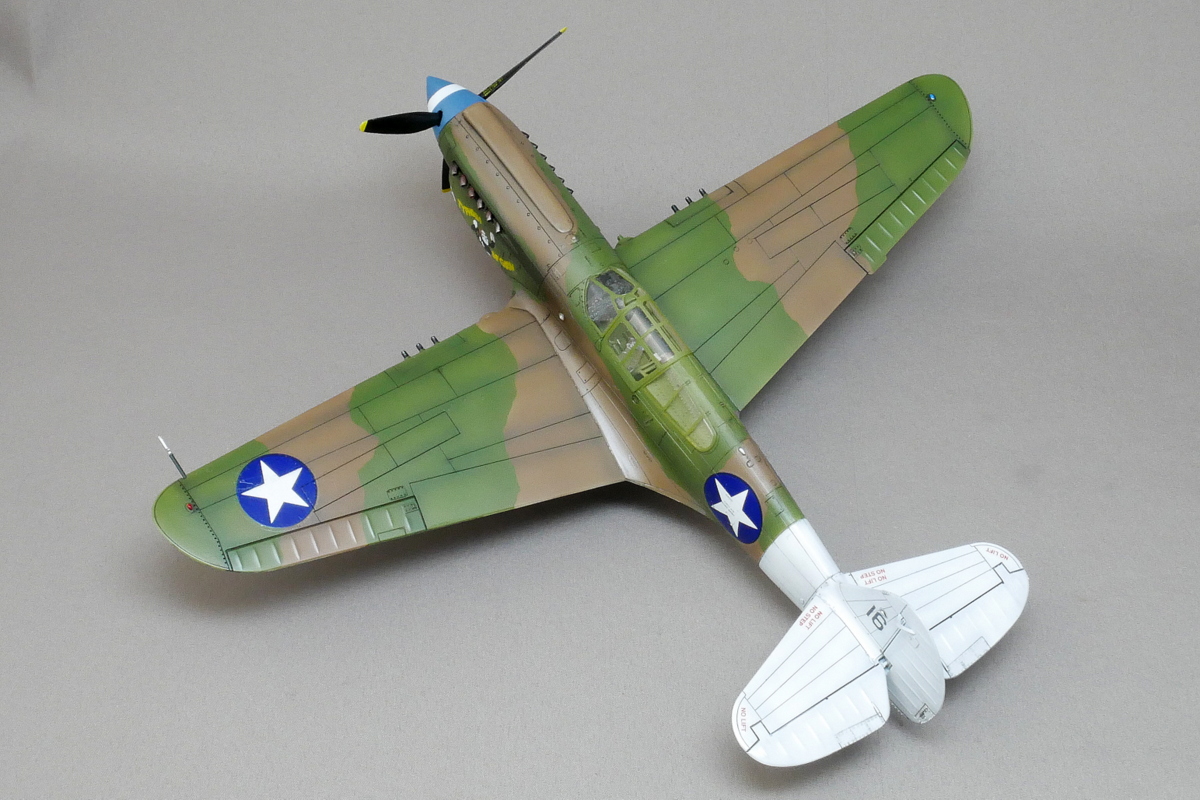 P-40E has been completed. P-40 has a nickname, type A to type C is Tomahawk, D, and E are Kitty Hawk, and after F type is Warhawk. Because this is an E type, maybe it is Kitty Hawk?
P-40E has been completed. P-40 has a nickname, type A to type C is Tomahawk, D, and E are Kitty Hawk, and after F type is Warhawk. Because this is an E type, maybe it is Kitty Hawk?
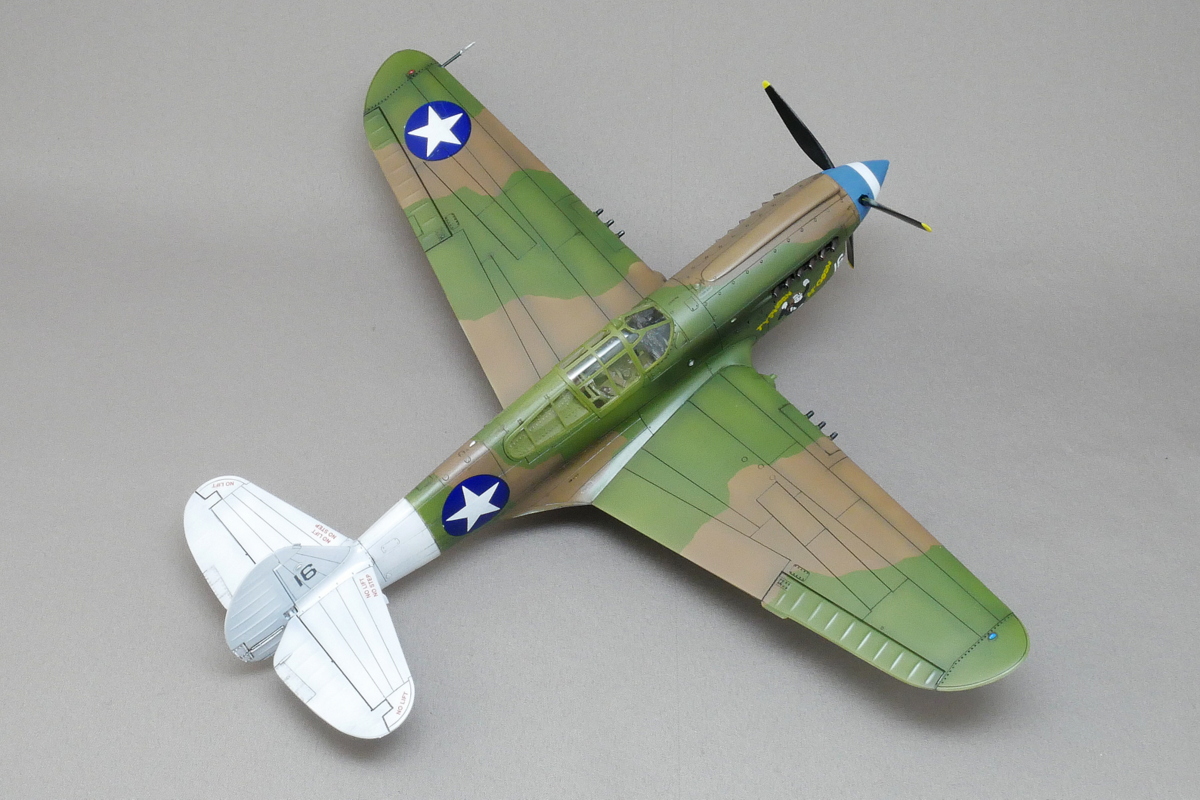
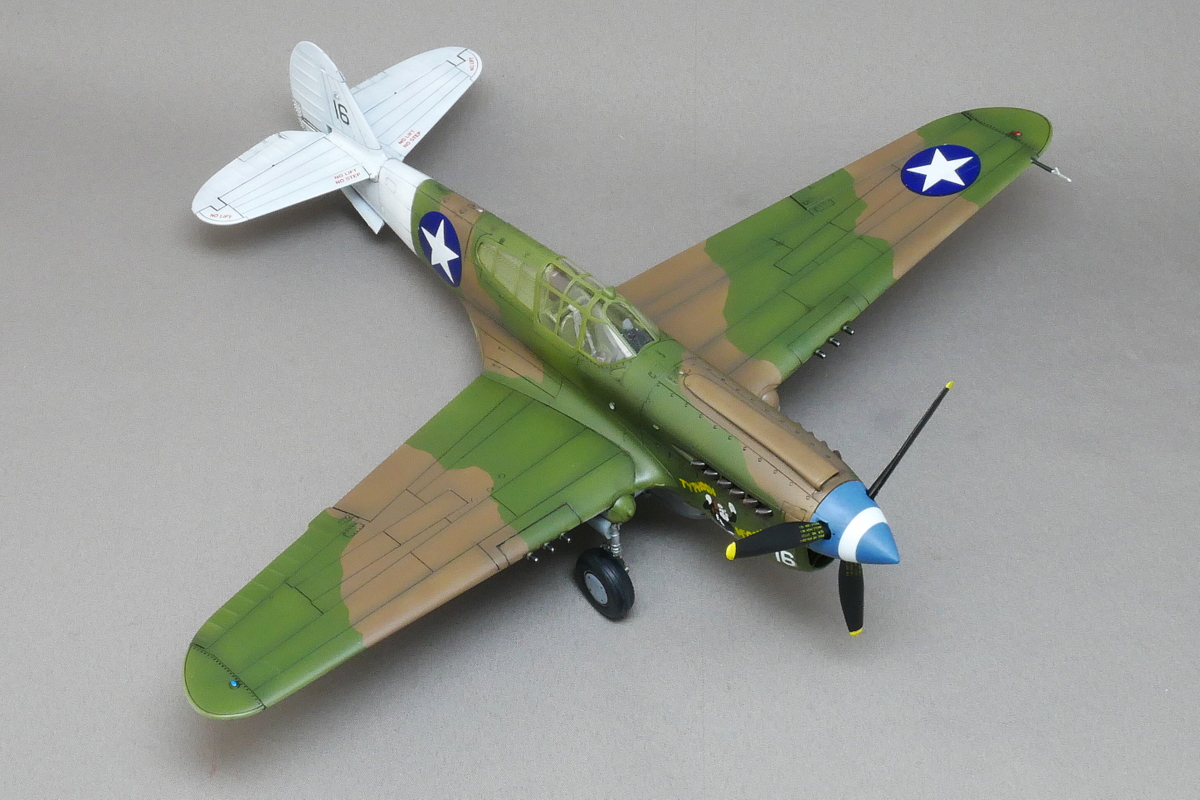 Approximately 17,000 aircraft were produced, and the main operating countries were over 20, including the United States, the United Kingdom, the Soviet Union, Australia, and New Zealand. The P-40 fought deadly with the Imperial Japanese Army Navy fighters. Japanese most famous zero-fighter production volume was about 10,000. The United States put out over 10,000 aircraft each of the famous models, such as Corsair, Mustang, etc. The overwhelming superiority of industrial power at the time.
Approximately 17,000 aircraft were produced, and the main operating countries were over 20, including the United States, the United Kingdom, the Soviet Union, Australia, and New Zealand. The P-40 fought deadly with the Imperial Japanese Army Navy fighters. Japanese most famous zero-fighter production volume was about 10,000. The United States put out over 10,000 aircraft each of the famous models, such as Corsair, Mustang, etc. The overwhelming superiority of industrial power at the time.
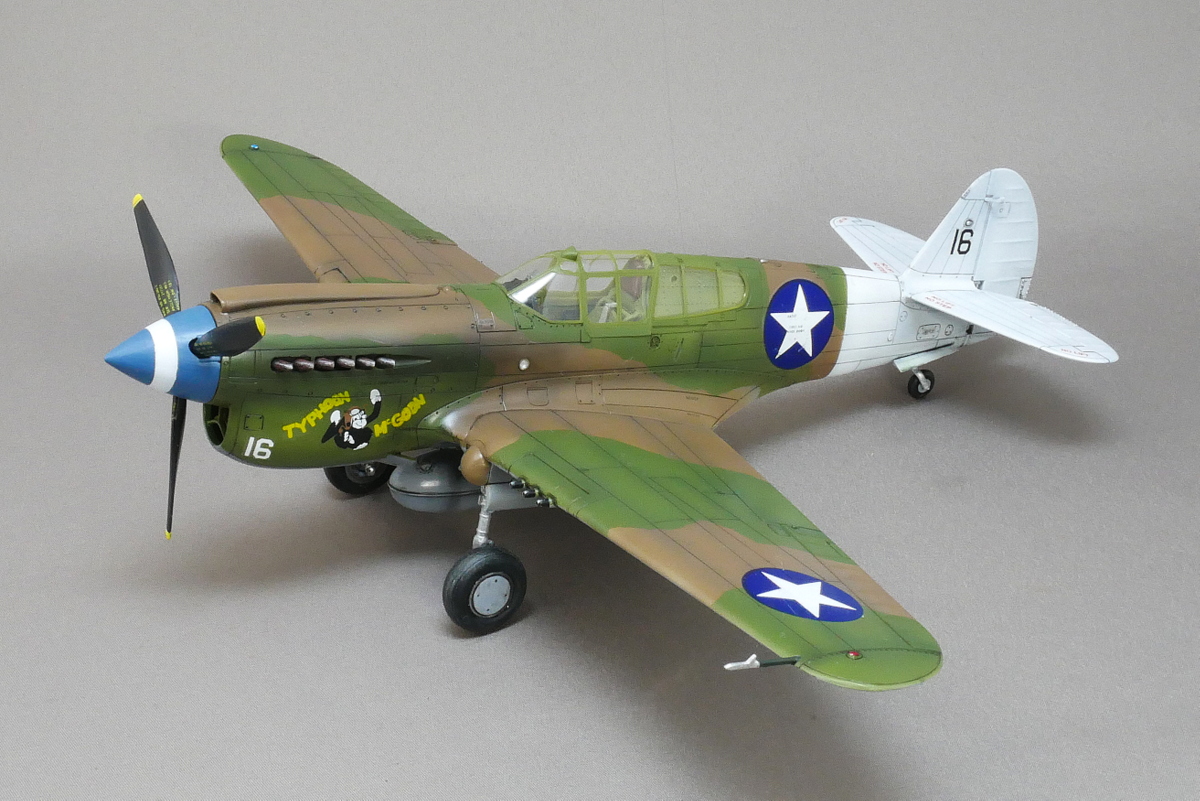
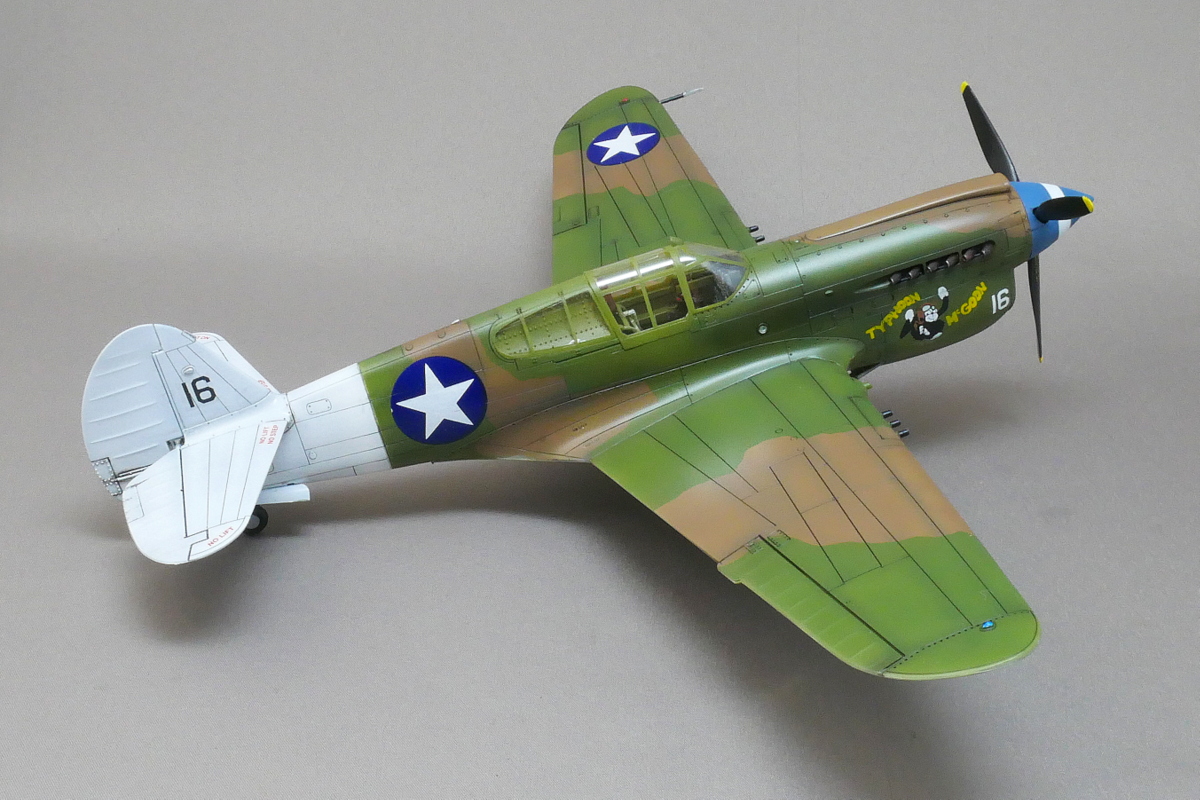 P-40E is heavily armed with six machine guns in both wings.
P-40E is heavily armed with six machine guns in both wings.
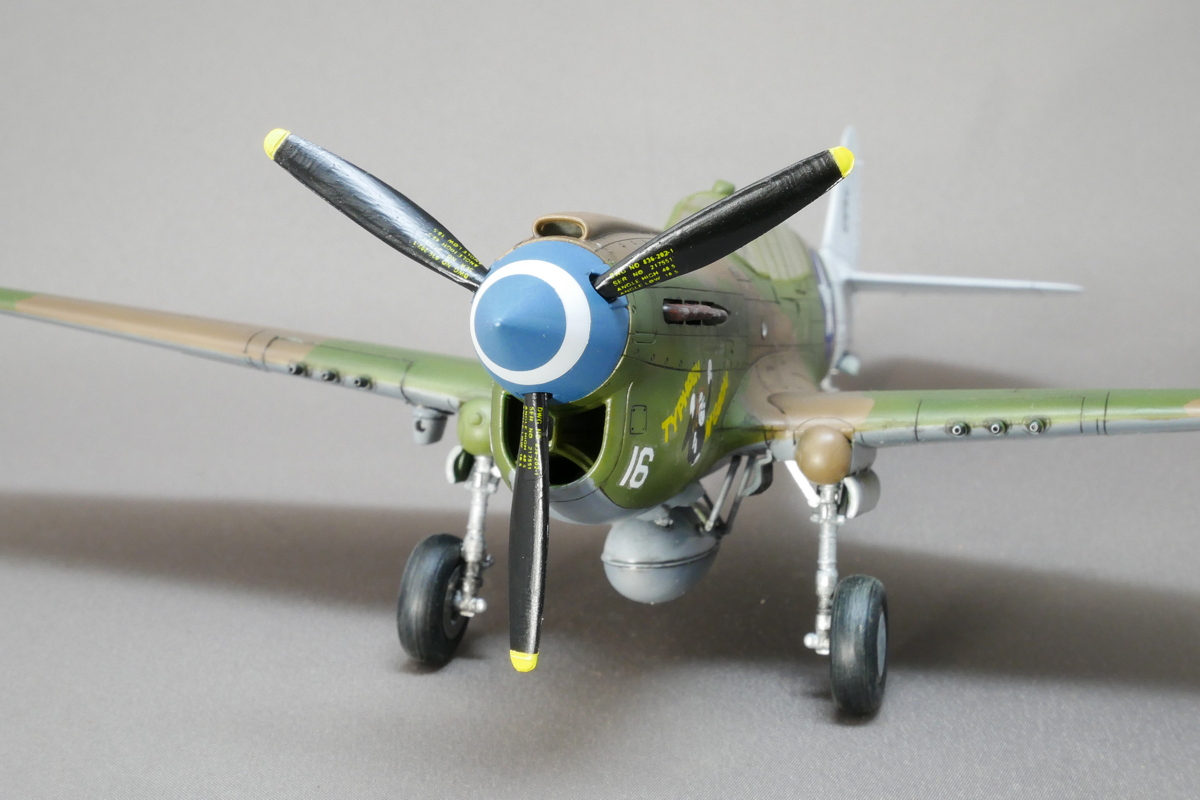 It is good that the decal of the propeller has been reproduced in fine character.
It is good that the decal of the propeller has been reproduced in fine character.
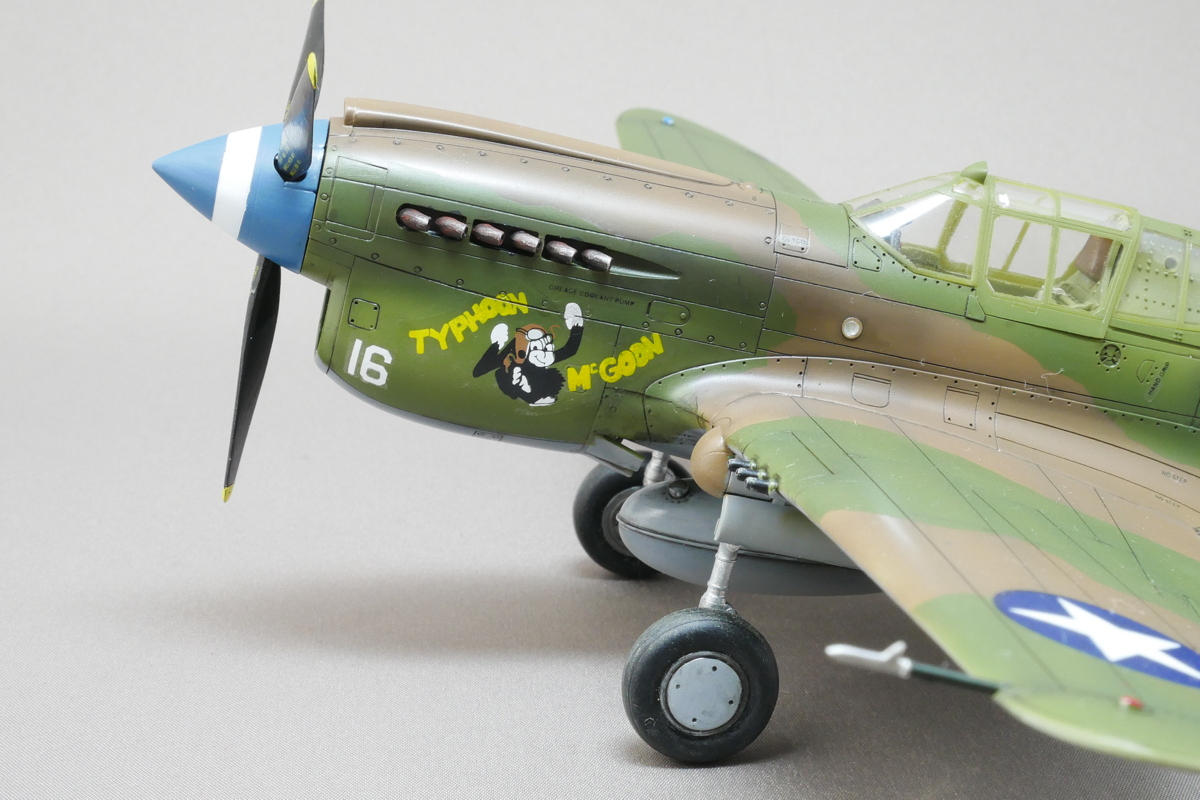
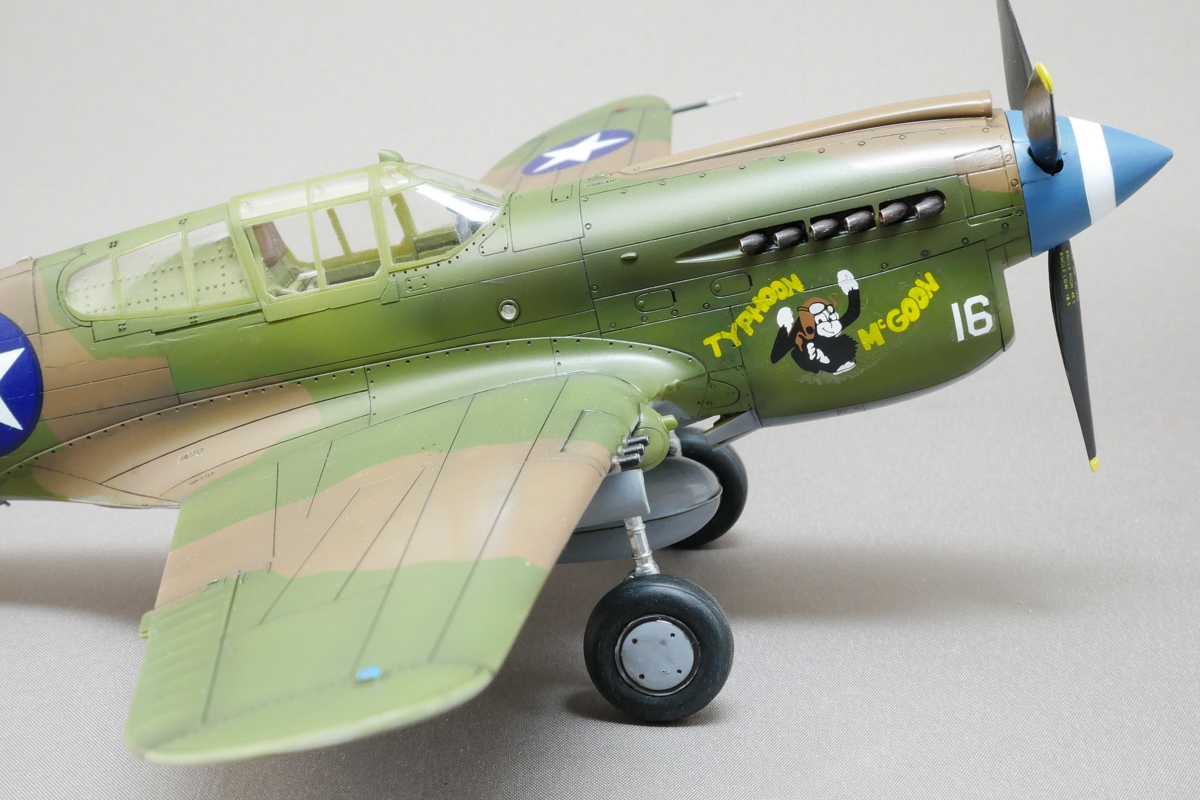 The most important decal on this aircraft. If this fails, past paintings are wasted so carefully pasted.
The most important decal on this aircraft. If this fails, past paintings are wasted so carefully pasted.
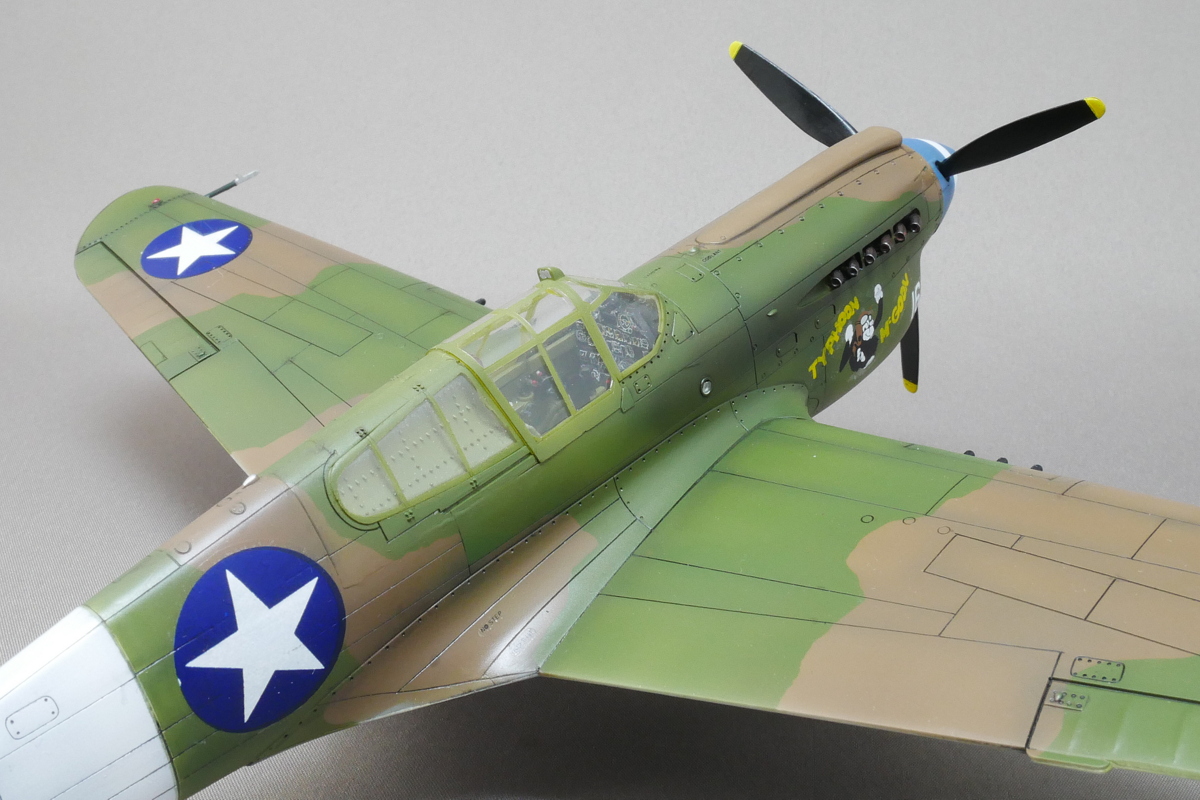
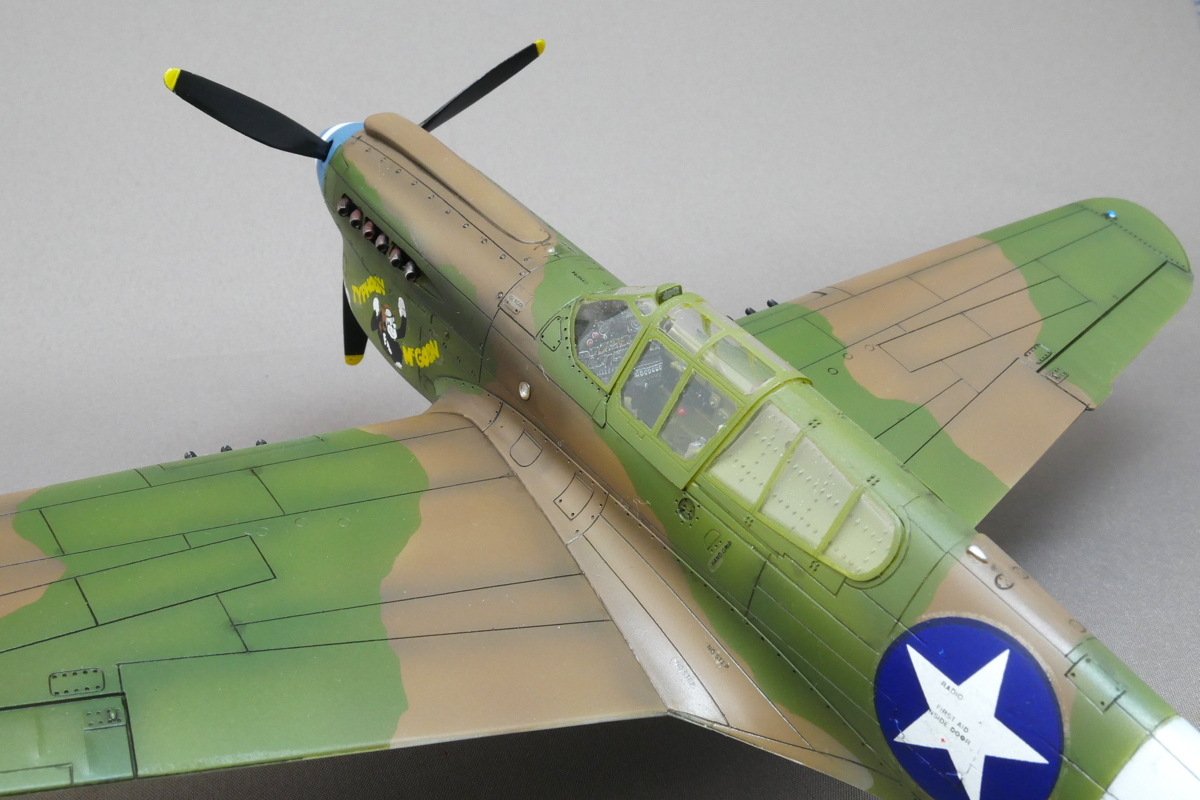 Because the canopy is large, the inside looks better even in the closed state.
Because the canopy is large, the inside looks better even in the closed state.
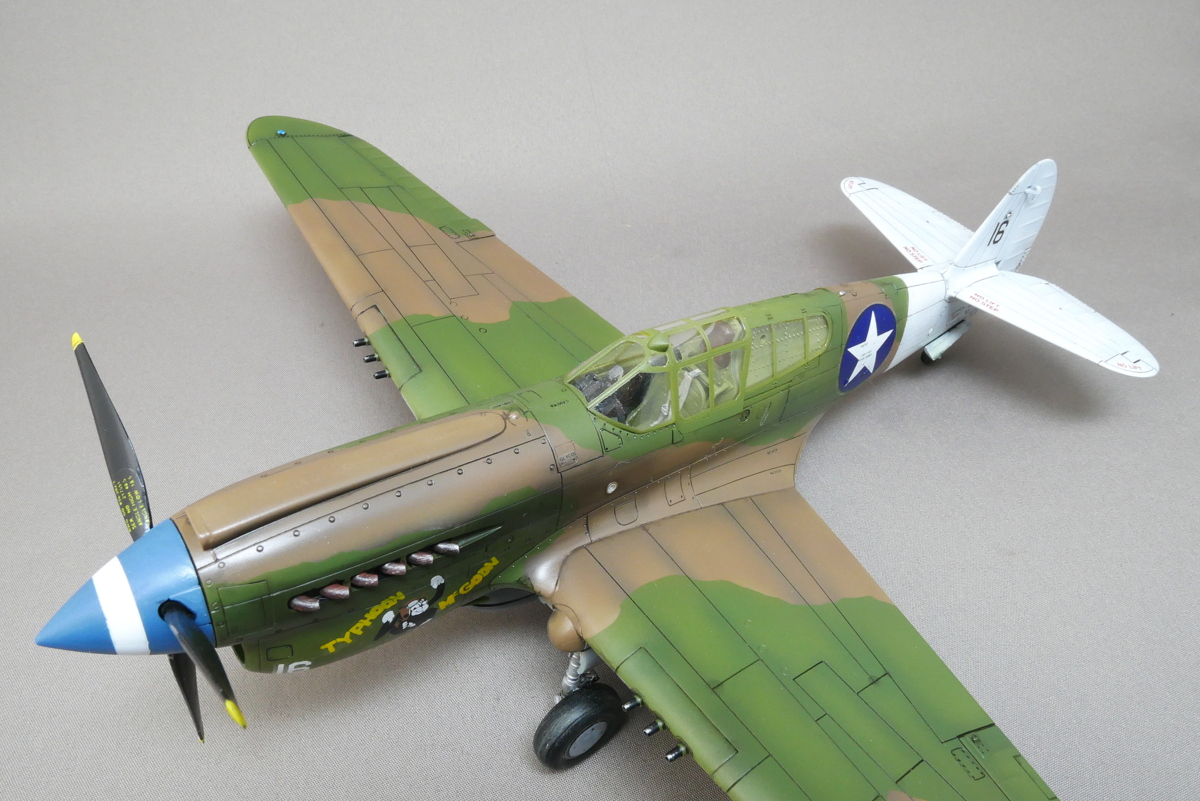 P-40E Warhawk USAAF 49th FG, 7th FS, “Typhoon McGoon,” Clyde Kinsley, New Guinea, 1943.
P-40E Warhawk USAAF 49th FG, 7th FS, “Typhoon McGoon,” Clyde Kinsley, New Guinea, 1943.
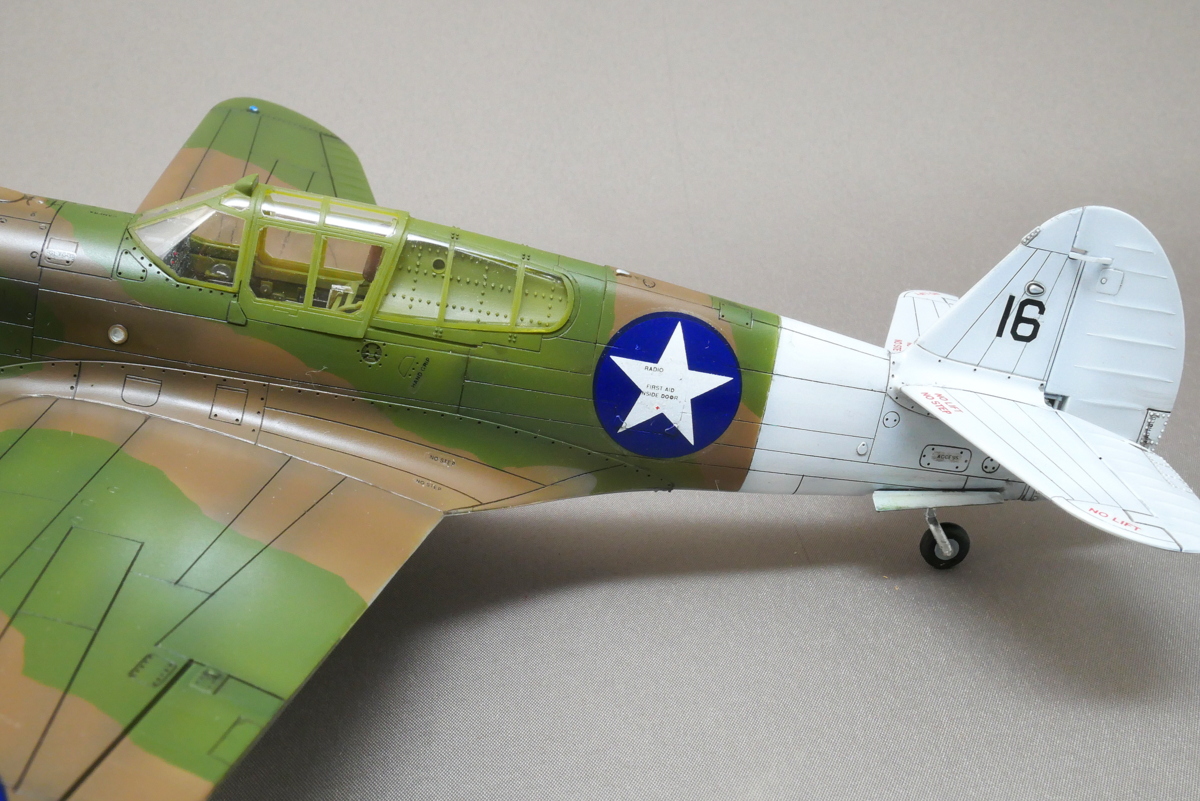 The white part of the back was a little too long. I thought that the parts division was a boundary line, and I painted it. As it seems to worsen, it is OK if I fix it. It would be best if the white part were shorter, about 5mm.
The white part of the back was a little too long. I thought that the parts division was a boundary line, and I painted it. As it seems to worsen, it is OK if I fix it. It would be best if the white part were shorter, about 5mm.
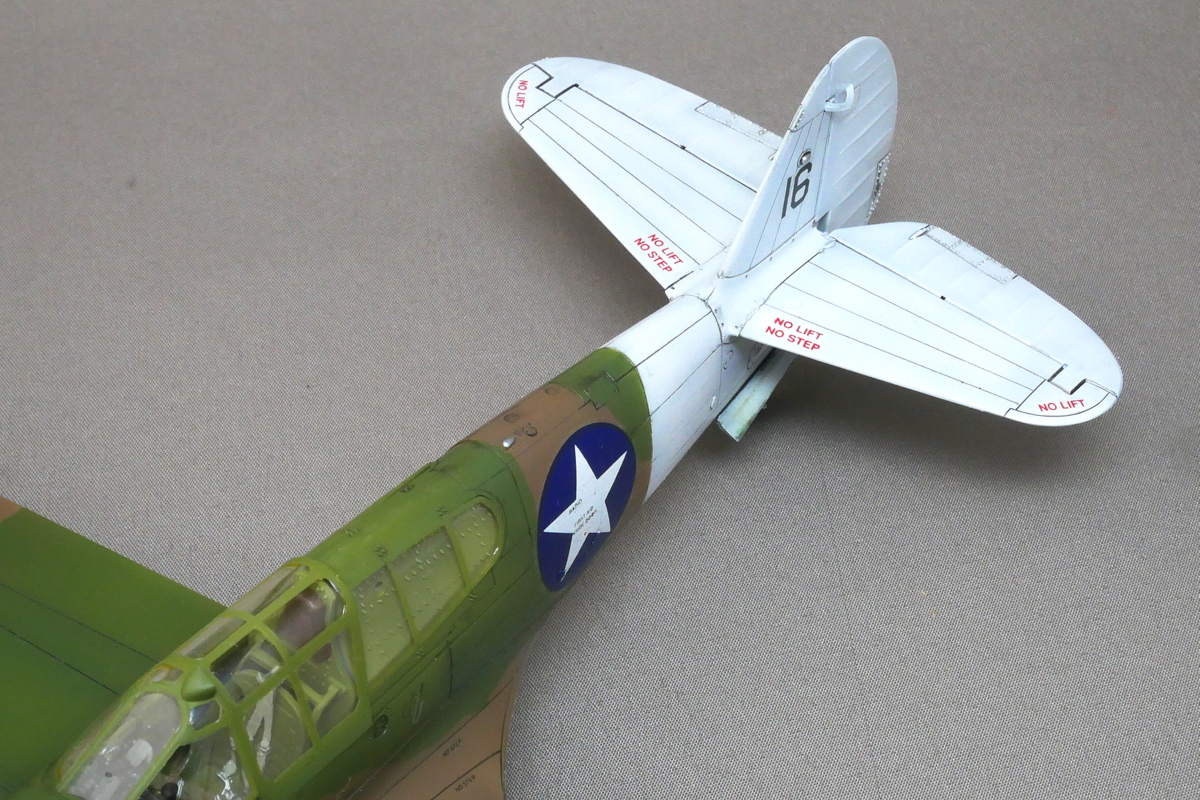
 Typhoon McGoon’s pilot was Clyde Vernon Knisley, Jr (1918-1945), born in Newport, Tennessee. From the fall of 1942, he participated in 7 FS of 49 FG of the New Guinea Front. He completed the 100th mission on June 8, 1943, and was conferred a decoration. Later he moved to the European front and carried out his duties by boarding the P-47D fighter. It was killed and shot down by the flak of the German Army on January 19, 1945.
Typhoon McGoon’s pilot was Clyde Vernon Knisley, Jr (1918-1945), born in Newport, Tennessee. From the fall of 1942, he participated in 7 FS of 49 FG of the New Guinea Front. He completed the 100th mission on June 8, 1943, and was conferred a decoration. Later he moved to the European front and carried out his duties by boarding the P-47D fighter. It was killed and shot down by the flak of the German Army on January 19, 1945.
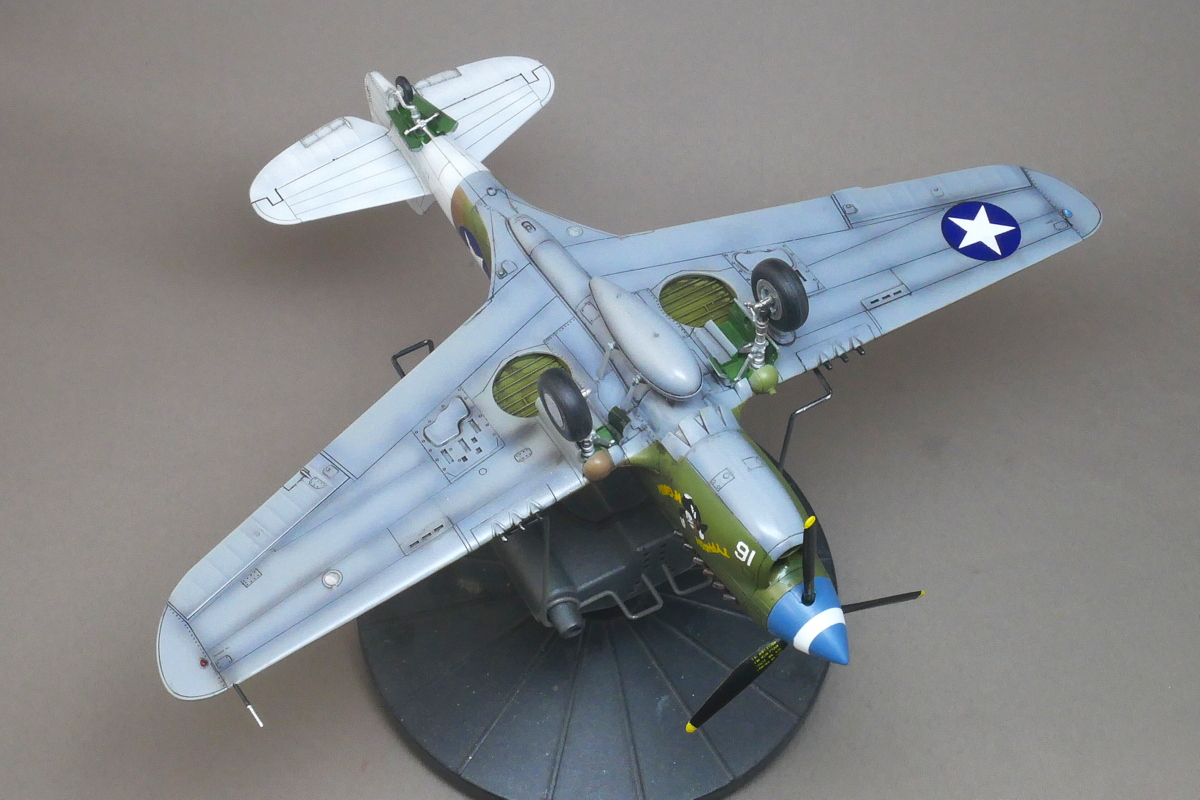
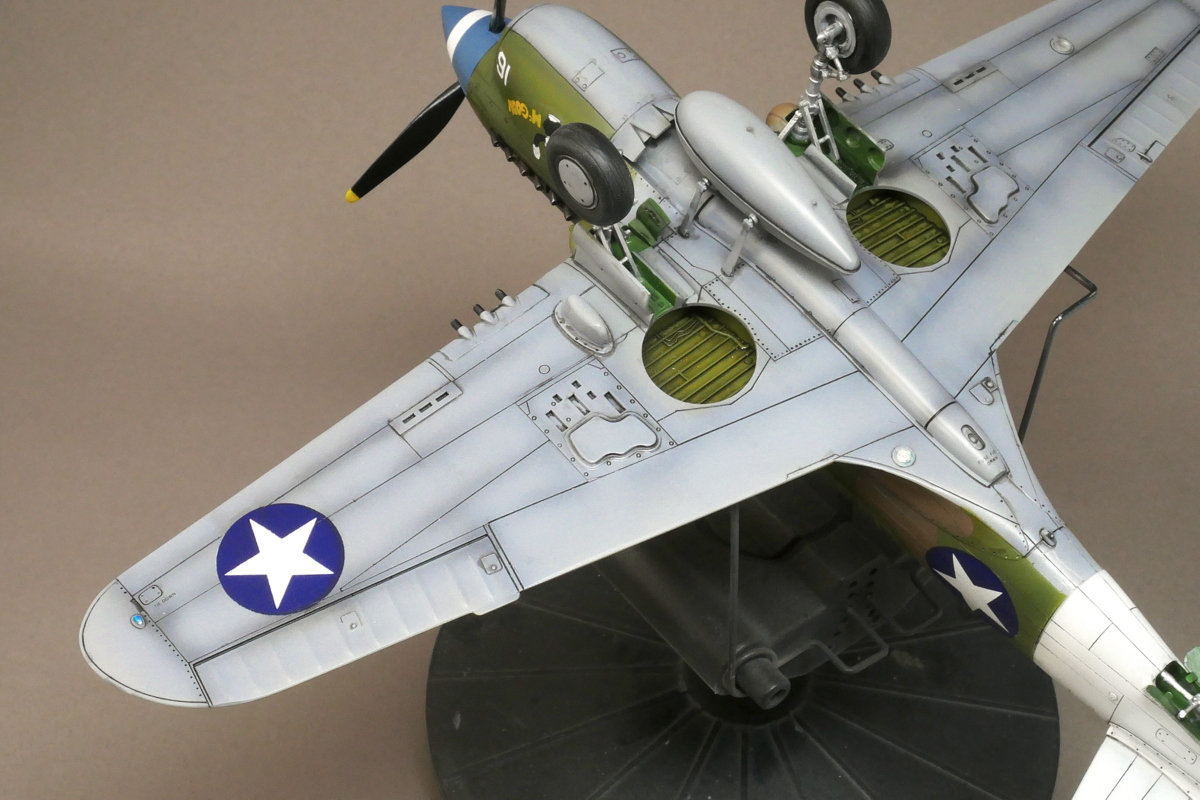 The fuel tank was an option. I choose to attach it.
The fuel tank was an option. I choose to attach it.
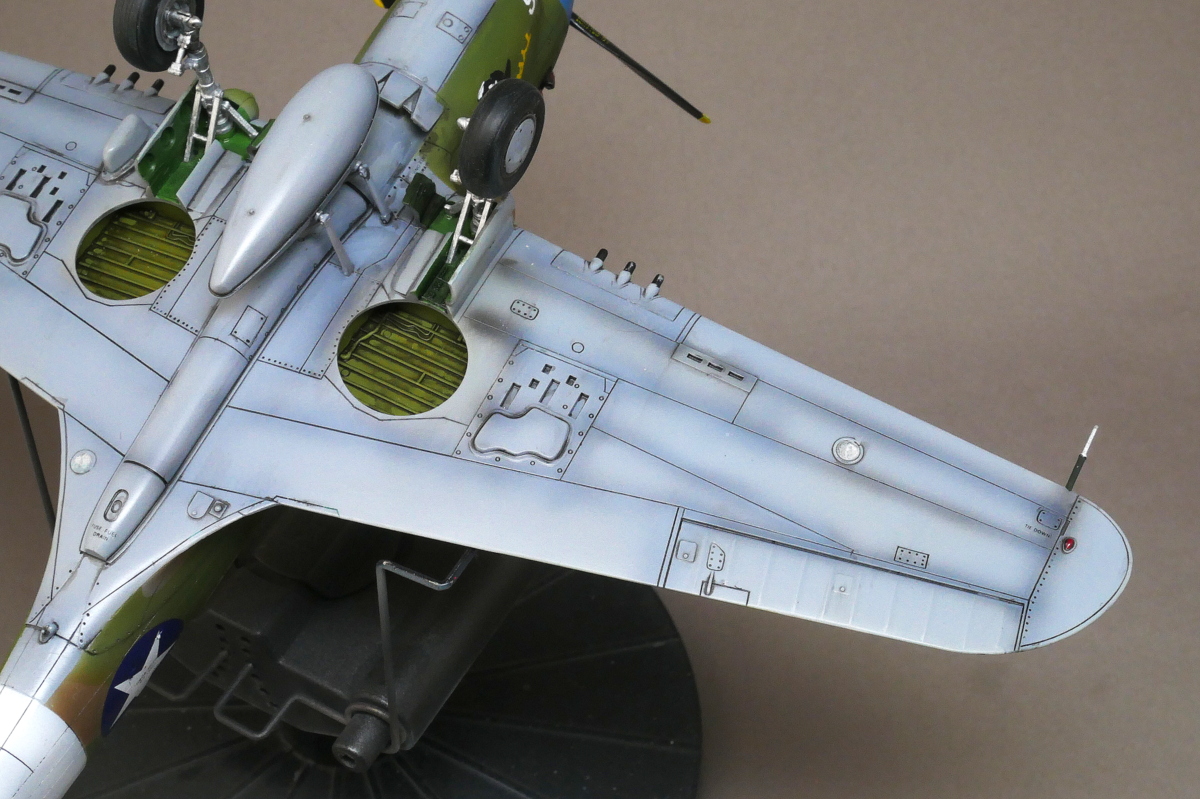
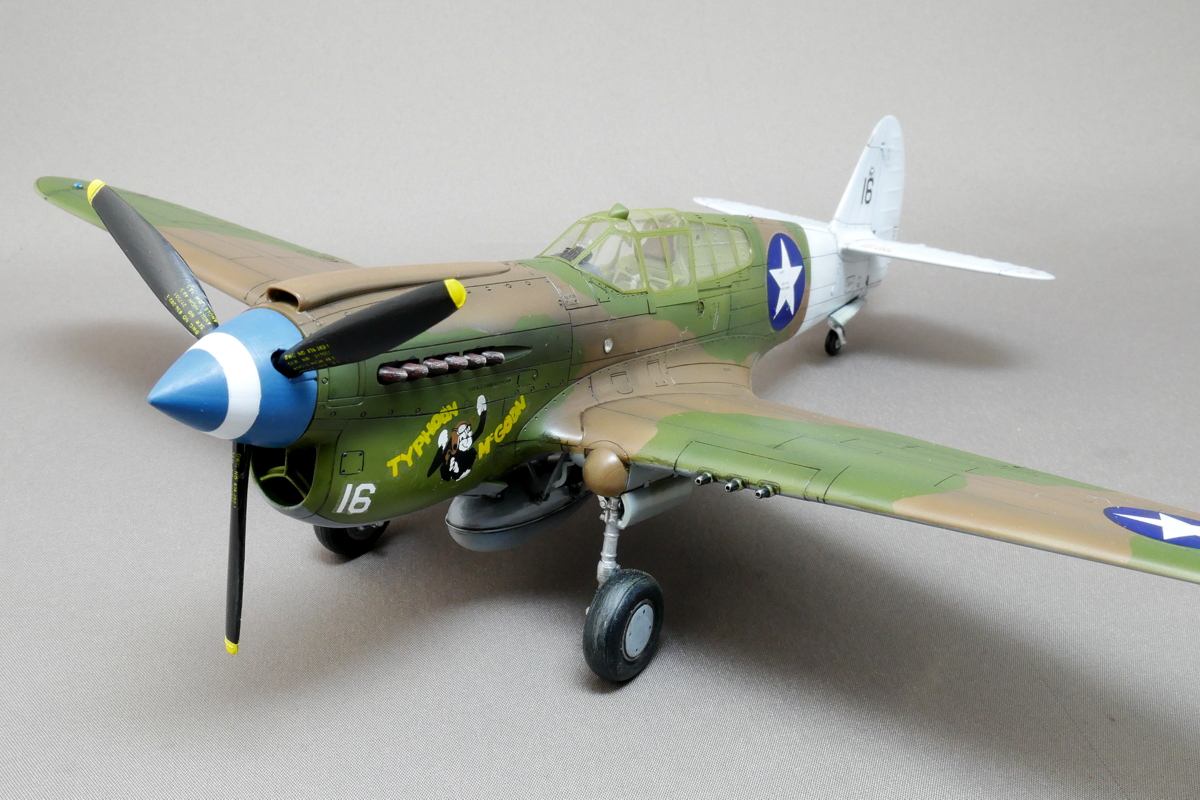 I used Mr. Mark Softer, and the super-scale decals were melted. Maybe I used too much. This sheet contains three fighter decals, so you can recover the same part of the decal even if you miss a bit. The damage is enormous when it is a character decal.
I used Mr. Mark Softer, and the super-scale decals were melted. Maybe I used too much. This sheet contains three fighter decals, so you can recover the same part of the decal even if you miss a bit. The damage is enormous when it is a character decal.
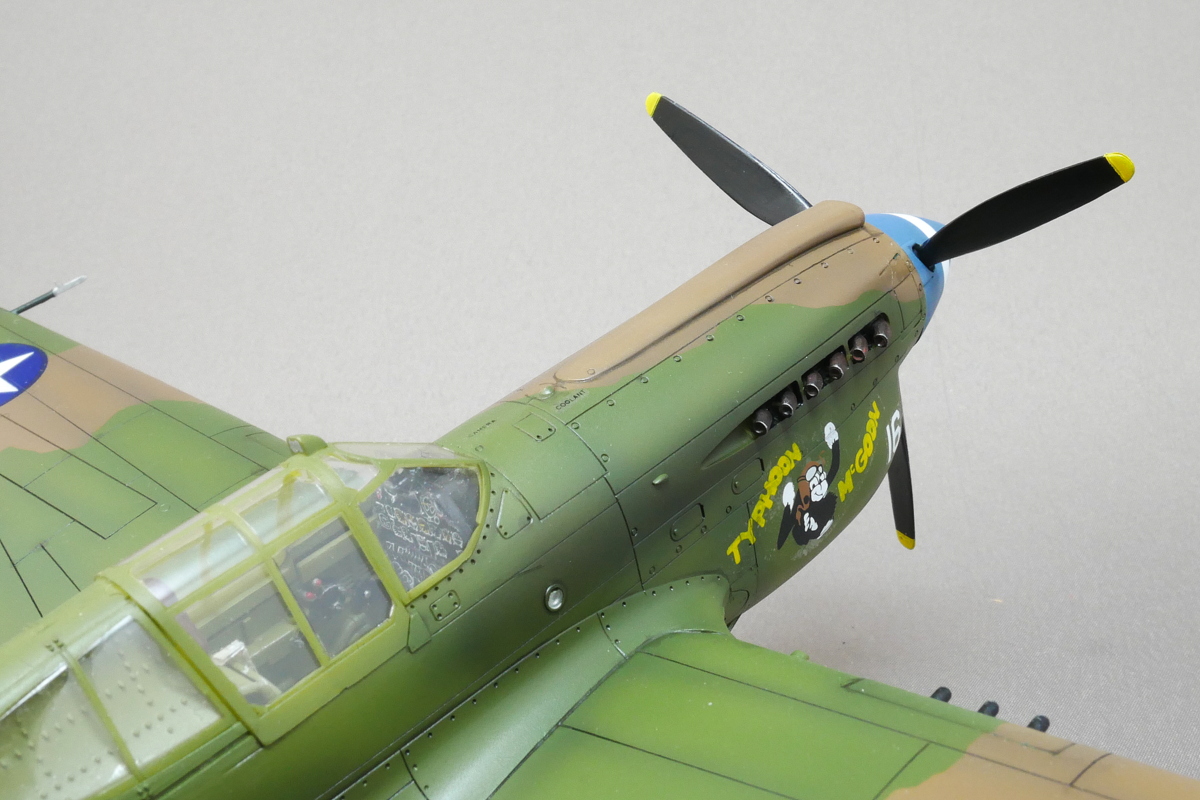
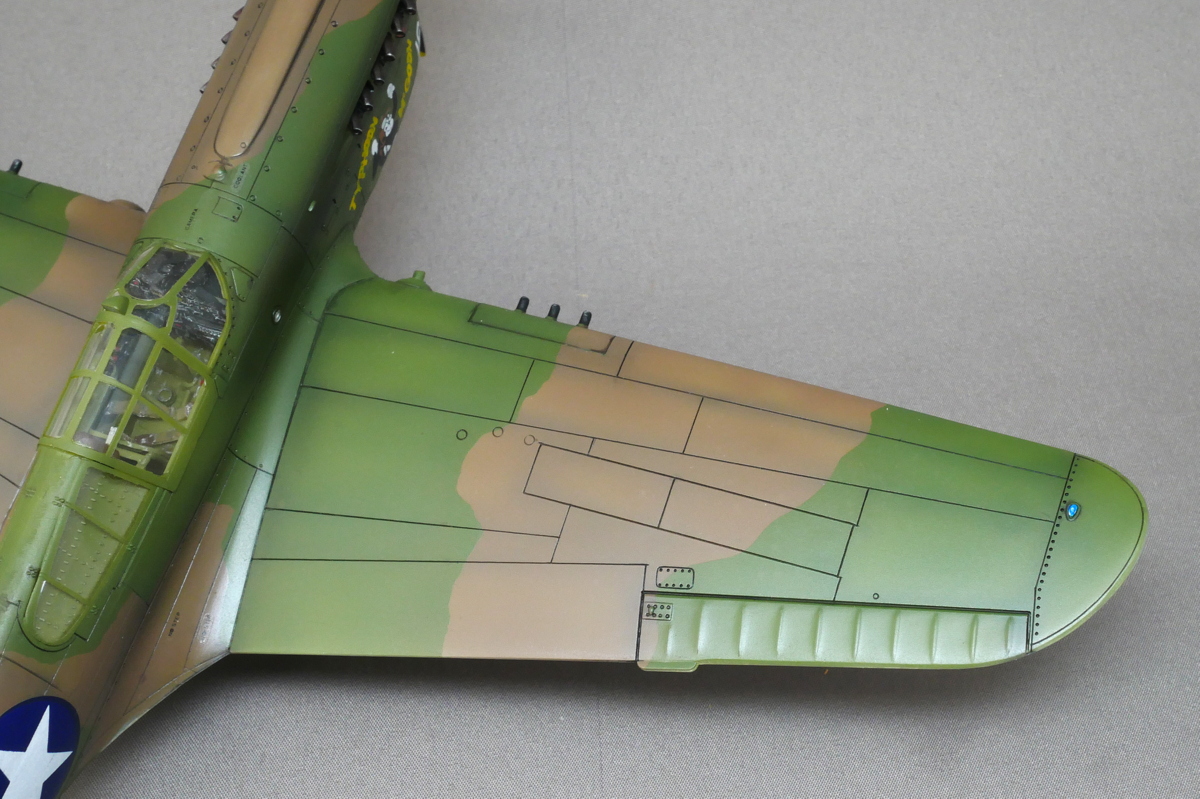 Navigation Lights are attached to both the upper and lower sides of the slight inside of the main wing.
Navigation Lights are attached to both the upper and lower sides of the slight inside of the main wing.
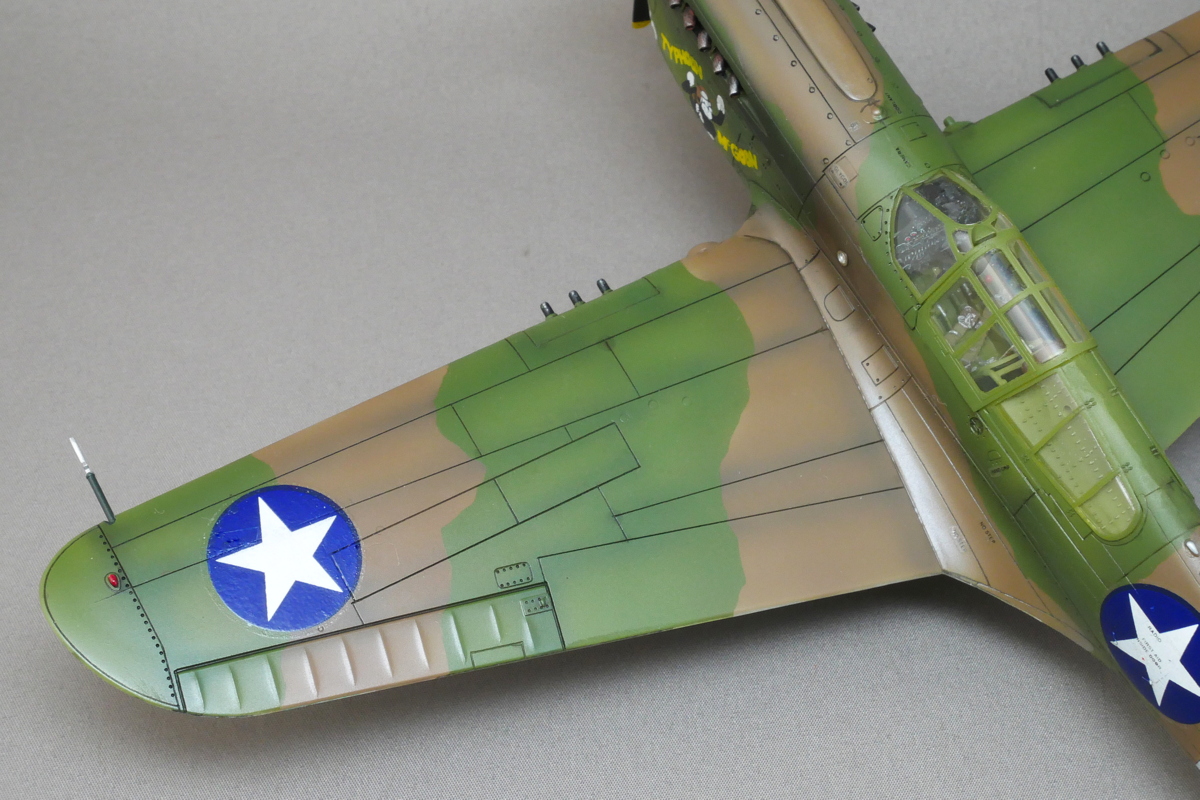
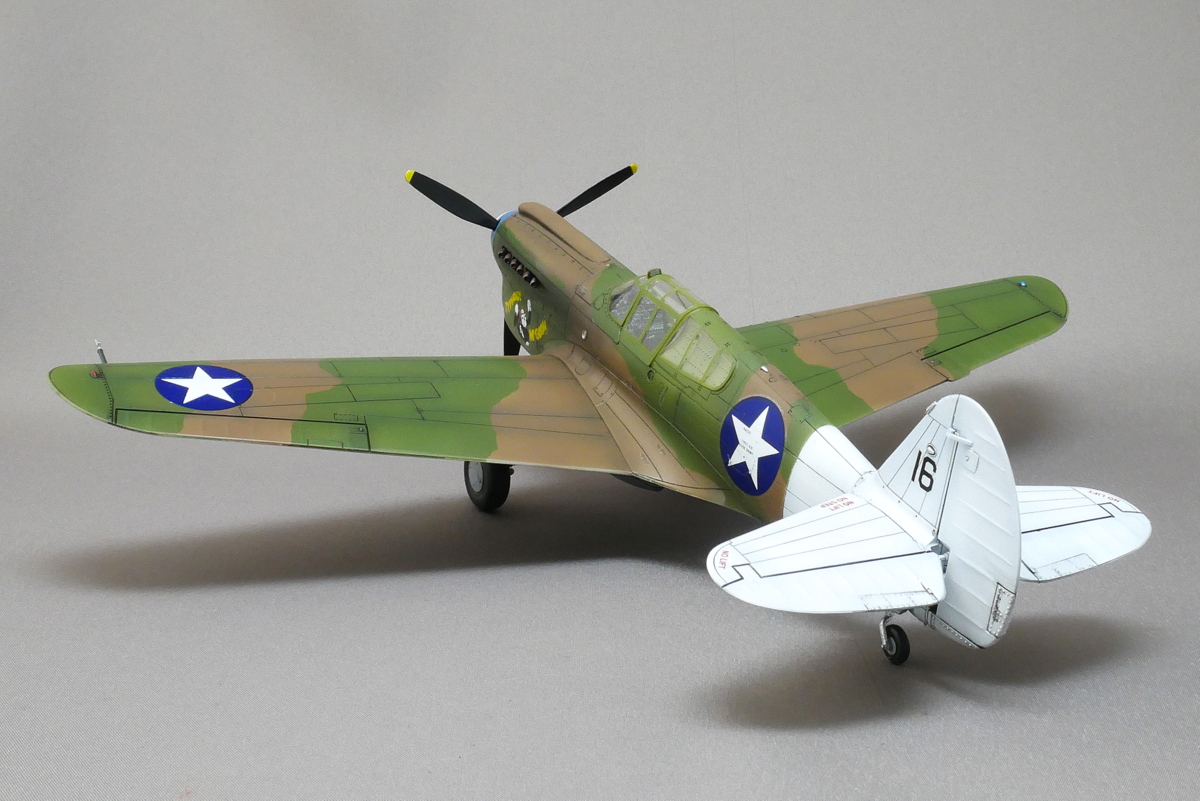
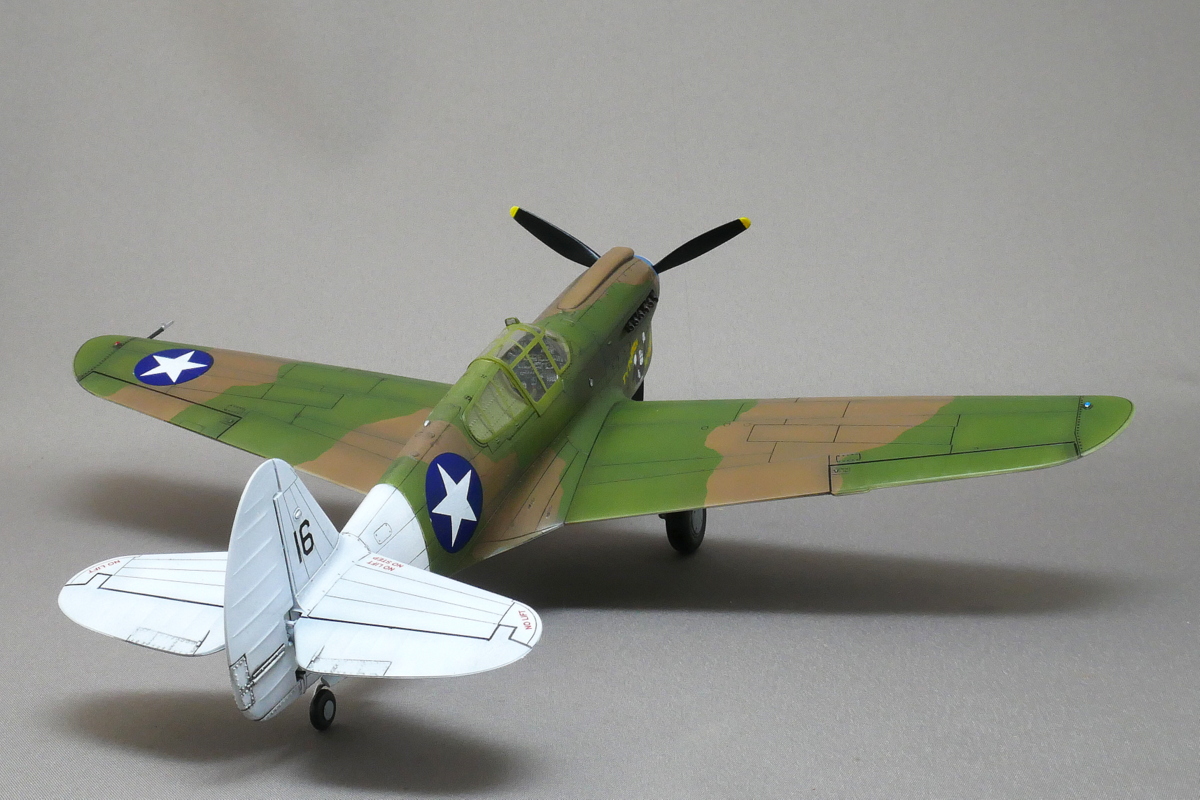 The aircraft back painted in white is unusual. Is it noticeable from friendly aircraft? P-40 of the form and paint variations are so much that I can not finish the count. It’s fun to think about what kind of painting variation next time.
The aircraft back painted in white is unusual. Is it noticeable from friendly aircraft? P-40 of the form and paint variations are so much that I can not finish the count. It’s fun to think about what kind of painting variation next time.
(2019/02/09)



コメント